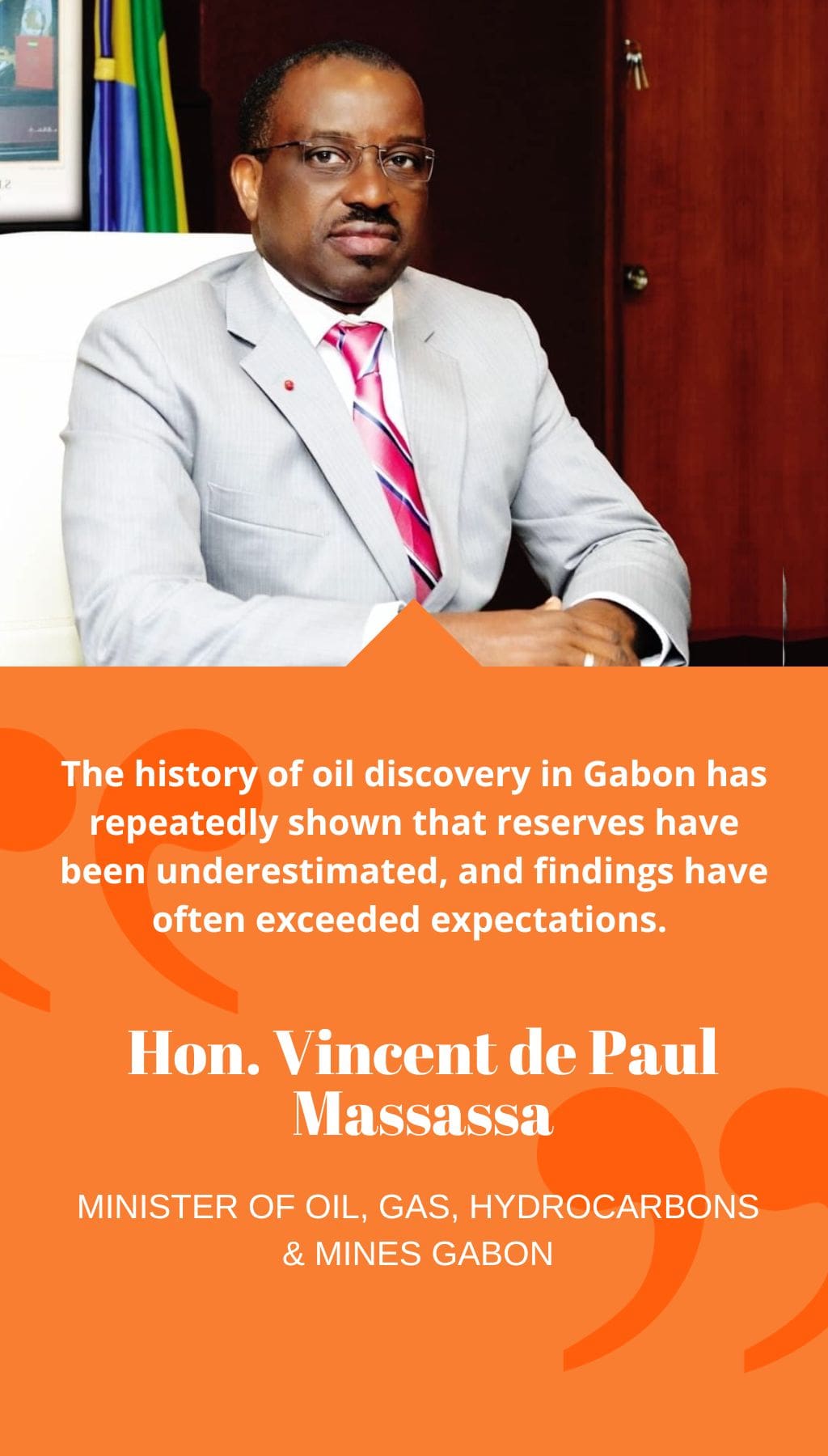
- Gabon | 25 June 2019

The oil sector has been instrumental in Gabon’s development. Can you highlight the key milestones that have shaped the industry’s evolution?
The oil sector in Gabon began garnering attention in the 1950s when significant discoveries were made near Port-Gentil. Companies like SPAEF (now Total Gabon) discovered the Ozouri field in Port-Gentil during that time, followed by Shell’s discovery of the Gamba field about a decade later. These fields remained crucial for many years, with the Gamba field still producing today. Gabon’s reservoirs can be classified into pre-salt and post-salt, each with distinct interests. While the initial discoveries were pre-salt, exploration activities shifted to post-salt, resulting in further discoveries like Anguille and Torpille. In the 1970s, there was a surge in exploration and production activities, leading to significant increases in oil production. The Rabi-Kounga discovery in 1985 was the largest in Gabon, and in 1997, national production reached a historic peak of 375,000 barrels per day. However, since then, production has either stagnated or declined, and minor discoveries have only helped stabilize or reduce the decline.
What potential exists for future discoveries in Gabon?
The history of oil discovery in Gabon has repeatedly shown that reserves have been underestimated, and findings have often exceeded expectations. Initially, the discovered fields were considered small or non-commercial, but they turned out to be among the largest in sub-Saharan Africa. Some of these fields have been in production for over 50 years, far surpassing their initial projected lifetimes. Gabon’s multiple reservoirs and source rocks continue to surprise, indicating that there are more reserves in the country than originally estimated. Furthermore, with recent discoveries in neighboring countries like Congo, Angola, Equatorial Guinea, and Nigeria, Gabon is strategically located in the midst of these developments. With focused exploration efforts, it is highly likely that new discoveries are waiting to be made. The shift now is to explore deep and ultra-deepwater areas, as previous discoveries were primarily in onshore and shallow waters.
The new oil code, implemented in 2019, offers improved fiscal conditions for exploration and production activities. Is this favorable timing for attracting investors?
The new oil code indeed provides some of the best fiscal terms in the region, aiming to attract investors to untapped areas. It demonstrates the Gabonese government’s commitment to ensuring investors’ confidence and returns on their investments. The code encompasses various incentives, investment conditions, and fiscal terms that investors seek. It introduces a longer exploration period, more flexible economic and fiscal terms, and greater contract execution flexibility. Additionally, the government has introduced an exploitation agreement to encourage the development of marginal or mature fields that may not be economically viable under traditional Production Sharing Contract (PSC) conditions. All the relevant terms and information are available on the Gabon 12th Licensing Round website (http://gabon12thround.com), enabling investors to prepare for the upcoming licensing round.
The 12th Licensing Round deadline was extended to incorporate the changes brought by the new oil code. What are your expectations regarding attracting bidders by the end of April?
We recognized that many investors were unfamiliar with Gabon’s new oil code, and we are actively working to raise awareness. When we initiated the 12th Licensing Round in 2018, Gabon had yet to establish guidelines to assist bidders and manage their expectations. As we approached the January 2020 deadline, none of these conditions were available to potential investors. Consequently, we extended the Licensing Round to create the right climate and provide precise provisions for various exploration scenarios, including shallow, deepwater, and ultra-deepwater opportunities. In the current round, we not only offer 35 blocks but also open acreages, totaling an additional 32 blocks.














